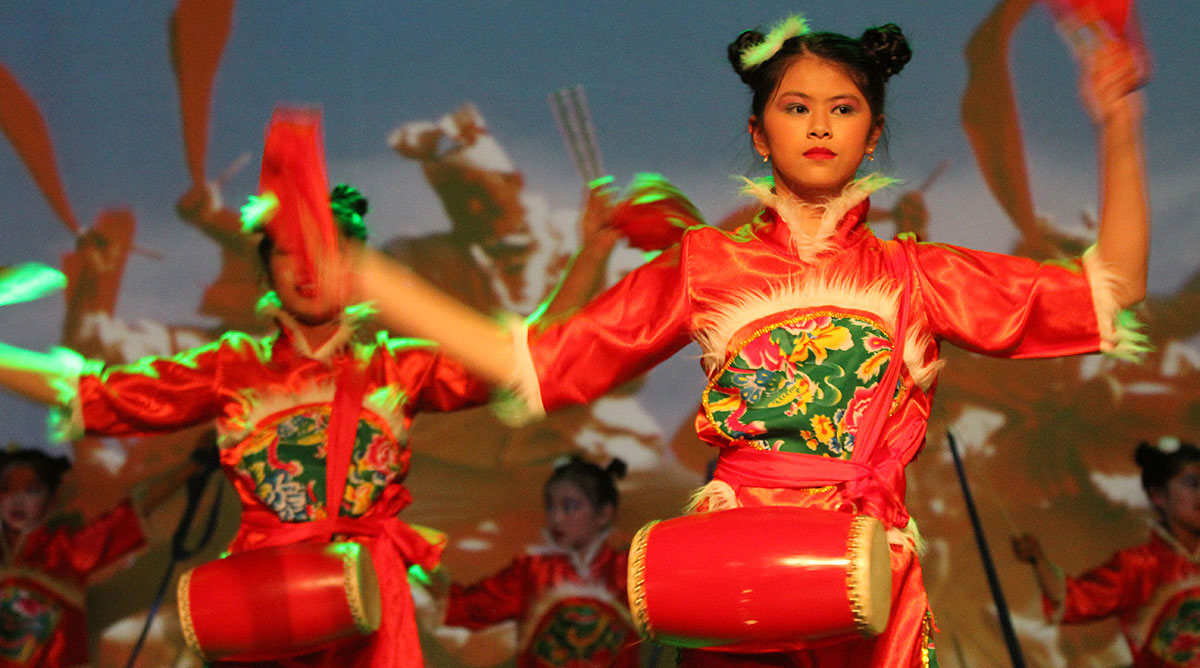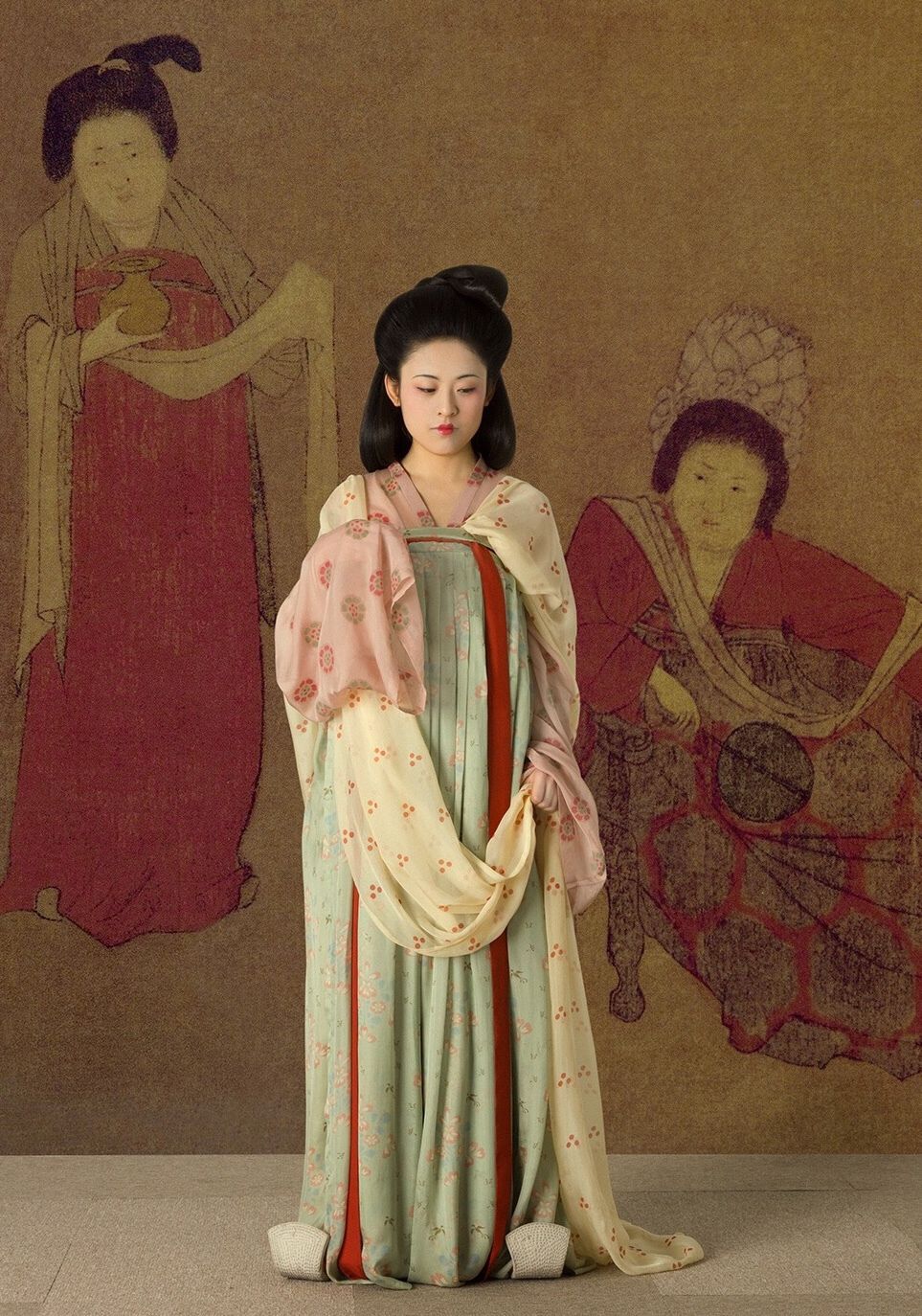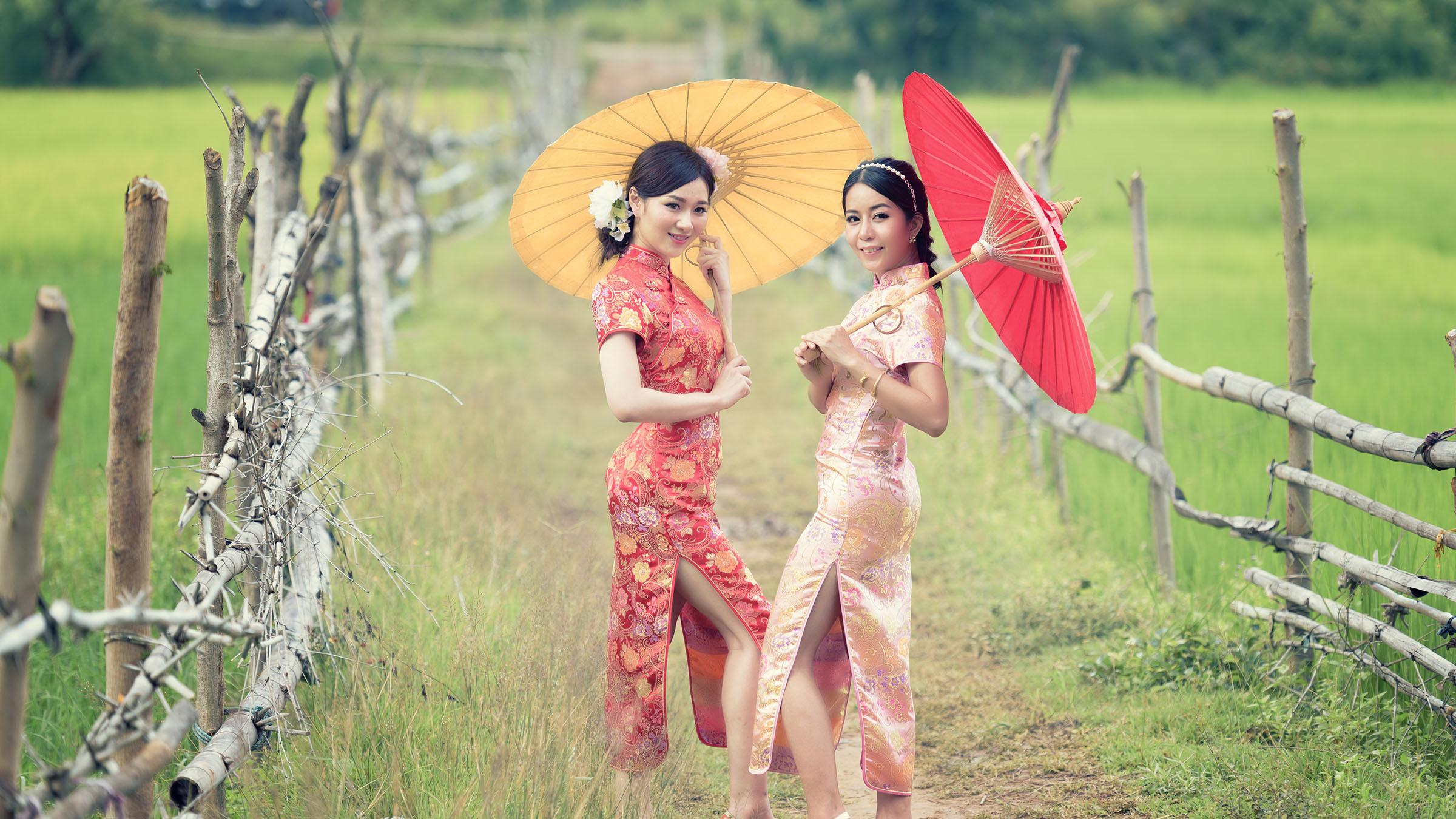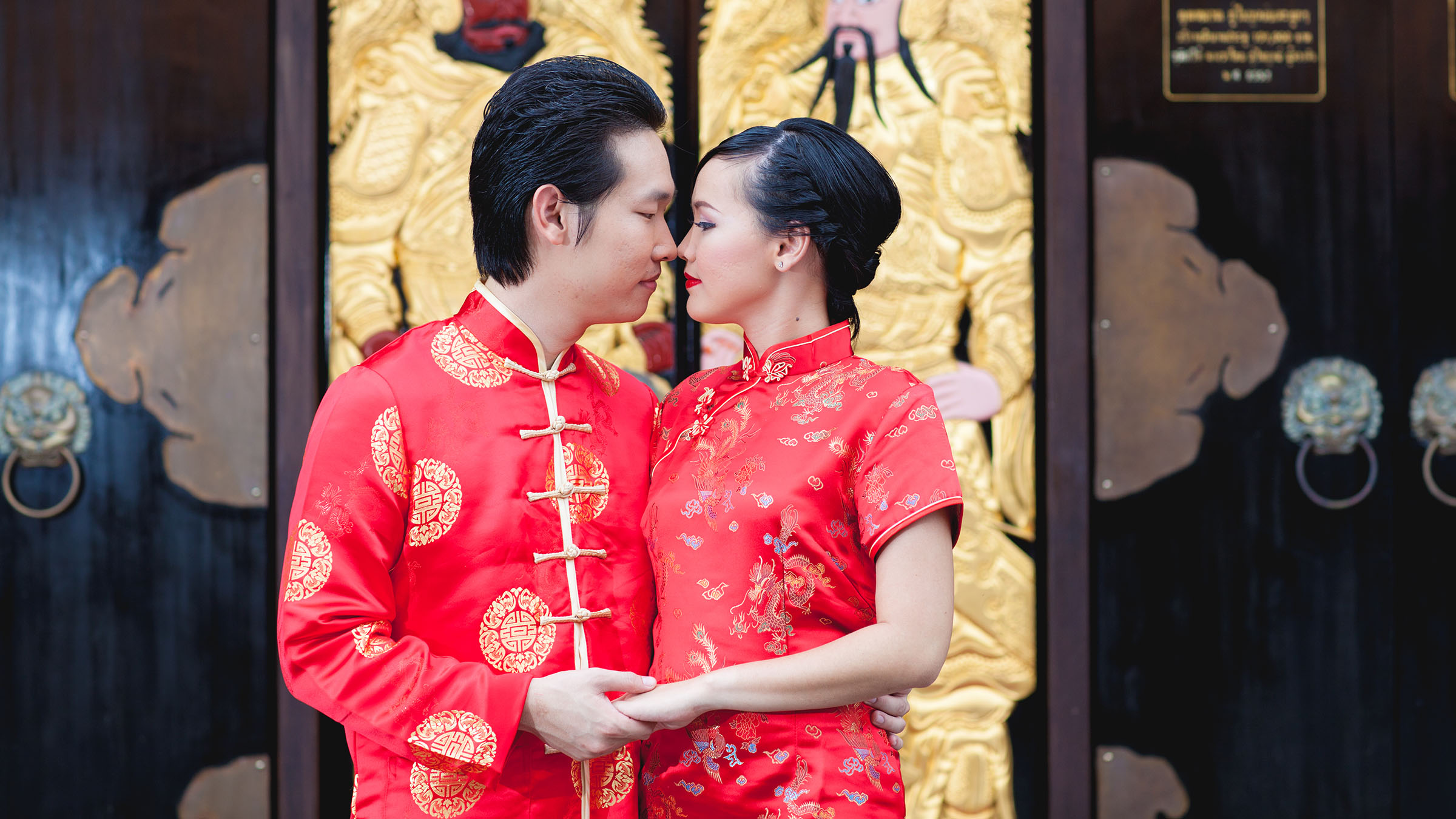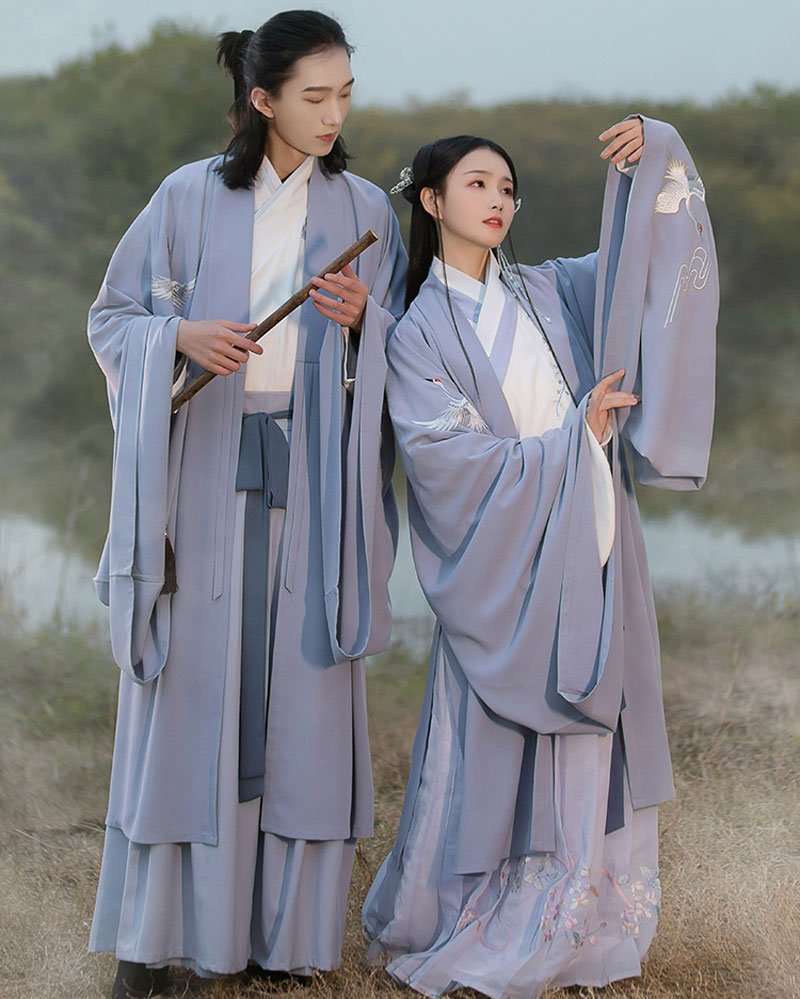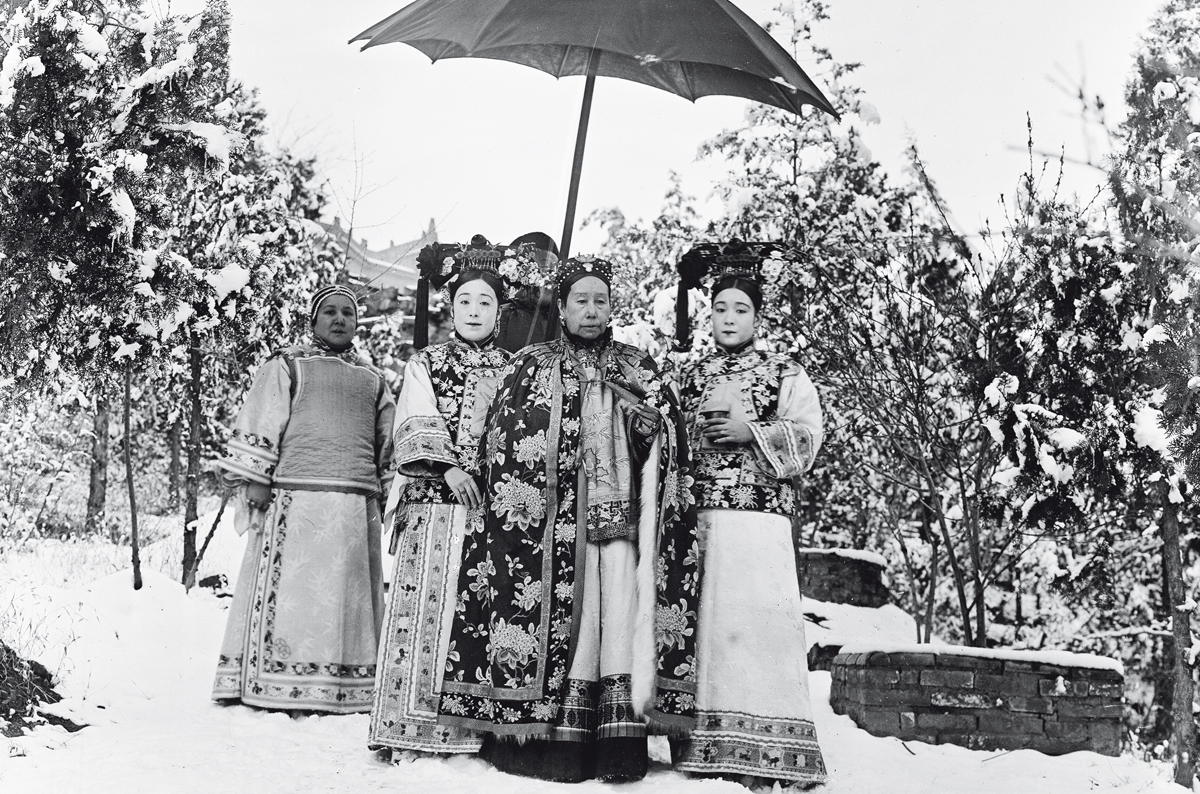An Asian nation that since ancient times is preceded by a worldwide reputation for being the nation that produces the most exquisite and delicate silk, a fabric that made the Chinese clothing an emblem of their traditional culture. Learn all about the Asian giant's wardrobe!

Chinese clothing
China was the first nation in the world to breed silkworms and make fabrics from the material they produce. Archaeological samples and studies indicate that the Chinese have been producing textiles since the Neolithic, some five or six thousand years ago.
It is estimated that about three thousand years ago, sericulture and silk weaving developed significantly in ancient China.
Chinese clothing has many types and styles of suits according to the times and occasions. There are traditional costumes from Zhongshan, Cheongsam and many others that have been created and used by ethnic groups scattered throughout this vast territory.
Each type of clothing in China is made in a unique way, exclusive patterns and different sewing methods, which were not only perfected over time, but in some cases changed in a dramatic and drastic way, with the arrival of a new dynasty. and the capricious imperial decrees of the new regent.
In the old feudal society, the rank and social status of an individual could be known thanks to their clothing, making the differences between social classes very clear, since the daily attire of common people would never be similar to that of the upper class.
Between the upper ruling classes, differences also existed, for example, during a time only the Emperor wore the color yellow and the dragon emblem on his attire, his exclusive traditional imperial clothing an assertion of his power.
As for the rest of his entourage, ministers, generals, councilors and their wives, their uniforms also had regulations, which restricted the colors, designs and number of figures to be used.
There is no typical Chinese clothing or suit, although some styles of clothing often represent China's culture to the world, for example, the Cheongsam, the Qipao, etc.
The Cheongsam and Qipao are recognized worldwide, inspiring many foreign variations, thanks to their simple yet exotic style. It is usually used in the north of China, as clothing for a wedding typical of the tradition of this country, in red, gold and silver embroidery.
In southern China, brides wear the Qipao or a two-piece dress called Qungua or Kwa, decorated with a golden dragon and phoenix design, this being a traditional wedding dress highly favored among ladies wishing to marry today.
History of Chinese Clothing
China has many ethnic groups with a long history and tradition, however, certain groups have dominated certain periods of history.
For thousands of years, generations of clothing designers have dedicated themselves to designing and making clothing, making garments that cover the human body an important component of Chinese culture, which also served to determine the nation's progress through their changes in styles.
Costume manufacturing in China dates back to prehistoric times, at least seven thousand years ago. The archaeological finding of sewing artifacts dating back to about eighteen thousand years old, such as sewing needles and pieces in bones, stone beads and shells with holes, testify to the existence of extremely early ornamentation and sewing pieces in Chinese civilization.
Chinese fashion was subject to change, depending on the seasons, political transitions, war conflicts, etc. When wars broke out, which happened frequently, the different styles of clothing showed the positions of people and the states they came from.
During the Qin and Han dynasties (221 BC – 220 AD)
The Qin and Han dynasties witnessed the unification of the territory as well as the written language. Qin Shihuang, was the first emperor of the Qin dynasty and established many changes and social systems, including attire for each class and social position, allowing people to be distinguished.
Many changes in the costumes and adornments of Chinese fashion were established in the Han dynasty, between 206 BC and 220 AD. New technologies for thread dyeing, embroidery, and metal processing developed rapidly in this period, causing a major change in clothing and accessories.
During the Wei and Jin dynasties (220 AD – 589 AD)
Chinese clothing underwent rapid development during the Northern Wei and Southern Jin dynasties. Before 265 AD, the cultures and aesthetic views of the peoples of northern and southern China merged due to constant population movements initiated by frequent war conflicts.
Many schools of philosophical thought had an influence on the life of the communities and on the conceptions of costume design.
During the Tang dynasty (618 AD – 907 AD)
The Tang dynasty, which lasted from 618 to 907 AD, allowed fashion to write the brightest page in the history of Chinese clothing in ancient times.
The outfits had greater variety, the clothing of the people was different and more diverse, because their rulers gave more openness to the outside world, which generated changes of thought and style in people, who became more cosmopolitan.
The clothes changed quickly, they became more striking, with different styles, which many people were willing to wear with pleasure.
During the Song, Yuan, and Ming dynasties
An informal clothing style appeared during the Song dynasty between 960 and 1279 AD, it was simpler and more elegant clothing.
During the Yuan dynasty between 1206 and 1368 AD, the Mongol ethnic group, known as the horse people, was in power and the clothing style was mainly a combination of Mongol and Han. Clothing was luxurious for the upper class, but simple in design and unadorned.
With the arrival of the Ming dynasty between 1368 and 1644, drastic changes occurred in the way of dressing. Clothing design was not limited to one style and advocated natural beauty, which gave more vitality, originality and significance to clothing culture.
During the Qing dynasty
The Qing dynasty, which spanned between 1644 and 1911, was characterized by elegant, balanced clothing design that many describe as glorious. This dynasty lasted about 200 years and witnessed dramatic world changes such as the Renaissance in Italy, the French Revolution, and the discovery of the Americas by Columbus, but the changes did not affect traditional Chinese dress.
At that time, China had a closed-door policy, so many changes did not influence it, and people still wore clothes that showed their rank, social class, and lifestyle. This lack of contact and influence from outside cultures allowed to maintain a precious heritage and history in Chinese clothing.
From 1930 to the modern era
Chinese clothing from 1930 to the present day has varied considerably, however, some ancestral costumes remain in the taste of many people for special occasions, such as the Qipao, between 1930 and 1940. Towards the 40s and 50s, the outfits become even more westernized, adapting to the shape of the body.
Some of the traditional outfits like the Qipao remained as everyday wear in Hong Kong until the late 1960s. Today, many Chinese brides will choose the modern style Qipao or Longfeng Kwa as their traditional outfits for their wedding ceremony.
types of chinese clothing
Chinese clothing has changed a lot throughout history. There are multiple designs, styles and colors that have marked every moment in the life of this nation, many of which are still used today. Some of the main types of traditional Chinese clothing are:
pien-fu
Pien-fu is an ancient two-piece ceremonial outfit with a tunic-like top that extends to the knees and a skirt or pants that extends to the ankles. It was complemented by a hat known as Pien, with a cylindrical shape.
They were generally wide pieces and sleeves with a lot of volume, it is a design of straight lines that usually shows very natural waves, regardless of whether or not it fits at the waist. It is very common for the garment to have delicate embroidery, decorative bands or other ornaments.
changpao and Qipao
The Changpao, also known as Changshan, for men and the Qipao for women is a traditional garment that was first used by the nomadic Manchu tribes.
It consisted of a single piece that extended from the shoulders to the heels, similar to a gown or long shirt, straight cut, open on the sides, with long sleeves and loose. It was usually made in an elegant natural silk.
During the Qing dynasty, the Manchus occupied central China and forced the citizens to adopt their traditional clothing, which has been in use among the Chinese ever since. This garment was displayed after the fall of the Qing dynasty only for some formal events. Men used to wear it in black along with a hat of the same color, for funerals.
The Qipao is a garment that is very popular among today's women, with slight changes from the original model. It is made closer to the body, with a narrow neck or without a collar, long or short sleeves, the front cut can be round, square or straight, the same happens with the length, depending on the taste of the wearer, by the knee, half leg or up to the ankle.
It is very common for the Qipao to be made of bright fabrics, usually red for weddings and other special celebrations. Although it can be seen in other colors and patterns of traditional Chinese figures.
Shenyi
Shenyi is a model that combines the Pienfu and the Changpao, a two-piece set, a tunic and a skirt with twelve joined pieces, similar to the Pienfu, but, unlike this one, they were joined by a seam, making it look like a single piece. piece, loose as the Changpao.
This dress was the formal dress in the Ming dynasty, however, people directly related to the government and scholars used it daily.
It had wide sleeves, but not as wide as the Pienfu and was slimmer than the Pienfu. A girdle was usually placed at the waist, which was more ornamental than functional.
Hanfu
The hanfu was a garment in China that could be worn by both sexes and its history dates back to the Han dynasty, a time when it was very popular, until the Qing dynasty prohibited its use.
It consisted of a knee-length jacket or tunic and a straight skirt, a little narrow and reaching the ankles, in bright and pastel colors for the ladies and dark tones for the gentlemen, who complement it with a hat, while the women with highly refined hairstyles and hair ornaments.
This garment has been used for a long time throughout Chinese history and is still used today in cultural and religious ceremonies, as well as being a reference model for many modern designers. It is said that it inspired the creation of Japanese kimonos and Korean Hanbok.
Characteristics of Chinese clothing
It goes without saying that Chinese clothing has characteristics that make it unique and unmistakable, a symbol of the culture of this Asian country.
With a relatively simple design, embroidered borders, decorated sashes, draped fabrics, shoulder accessories and sashes, which are often added as ornamentation, they are varied designs with unique characteristics that make traditional Chinese dress special. Among the most common characteristics of Chinese clothing, we find:
1-Dark colors
Dark colors are widely used in traditional Chinese clothing, with a preference for these more than for light colors. Ceremonial clothing was generally dark in color, but with very elaborate and shiny finishes. Light tones were generally appreciated in the everyday clothing of the common citizen.
2-The color of weddings is red
Red is a widely used color, being the favorite in many ceremonies and occasions for most Chinese, as it represents good luck and auspiciousness.
In China, many people wear red when they celebrate some festivals or the most important events in their lives, such as the Chinese wedding ceremony.
Gold and silver colors are widely used in decoration when it comes to something good, such as birthday celebrations, promotions and weddings, as it symbolizes wealth, abundance and prosperity.
3-Colors according to the seasons
The Chinese associate certain colors with specific seasons, for example, green represents spring and the east, red represents summer and the south, white represents autumn and the west, and black symbolizes winter and the north.
4-The funeral colors are white and black
Funerals in China are carried out in different ways, depending on the age of the deceased, their social status and the causes of death. However, in any case, the colors of clothing to wear for a funeral are black and white.
5- Designs
Peony and water lily designs were widely used in clothing, being symbols of wealth and elegance.
There were certain designs destined for traditional imperial clothing, which were generally decorated with dragons, nowadays those imperial patterns are becoming popular, many people who wear some old model today, opt for these ancestral designs.
Chinese Imperial Dress
Longpao or dragon dress, is a Chinese imperial attire, long robe style, with elaborate and meticulous dragon embroidery. Chinese emperors used the Longpao to go to court every day, it was a kind of official uniform.
However, they had some of special use for ceremonies, festivities and visits to the Temple, they were made of the best quality silk with valuable decorations. This clothing was very luxurious and difficult to make, it required the work of approximately four expert tailors in the piece and its elaboration extended to about two years.
Some records indicate that the Longpao has nine embroidered dragons, which are generally located on the chest, back, knees, shoulders and inside the suit.
In the old feudal society, people dressed according to their social class and status, so it was easy to distinguish between ordinary people and upper class people. Each one had certain regulations regarding their attire, models, colors and designs, with clothing such as the Longpao that were intended only for the use of the Emperor.
The first imperial suit was black, however its color changed depending on the dynasty in turn, for example:
- The Xia dynasty, Zhou dynasty and the first emperor of Qin all used black as their official color.
- The Sui and Tang dynasties opted for the color yellow.
- The Song and Ming dynasties made the color red official as the color of the emperor and the court.
Clothing in China during the Revolution
After the Communist Party of China took power in this Asian country, one of its decisions was to ban all the customs that were associated with the deposed Chinese empire. Therefore, the different traditional Chinese outfits and the different artistic expressions are considered tools of the upper classes and bourgeoisie to make references to social classes.
With Mao Zedong in power, Chinese citizens left behind the beautiful and unique traditional costumes, to wear the well-known Zhongshan suits or Maoist suits.
Inspired by Western style, it consists of a straight lapel jacket, four flap pockets, five front buttons and three on each straight sleeve. The new political leaders affirmed that this type of clothing in China unifies the people, since it was used by all citizens equally, regardless of class or gender.
We invite you to consult other articles on this blog, which may be of interest to you:

